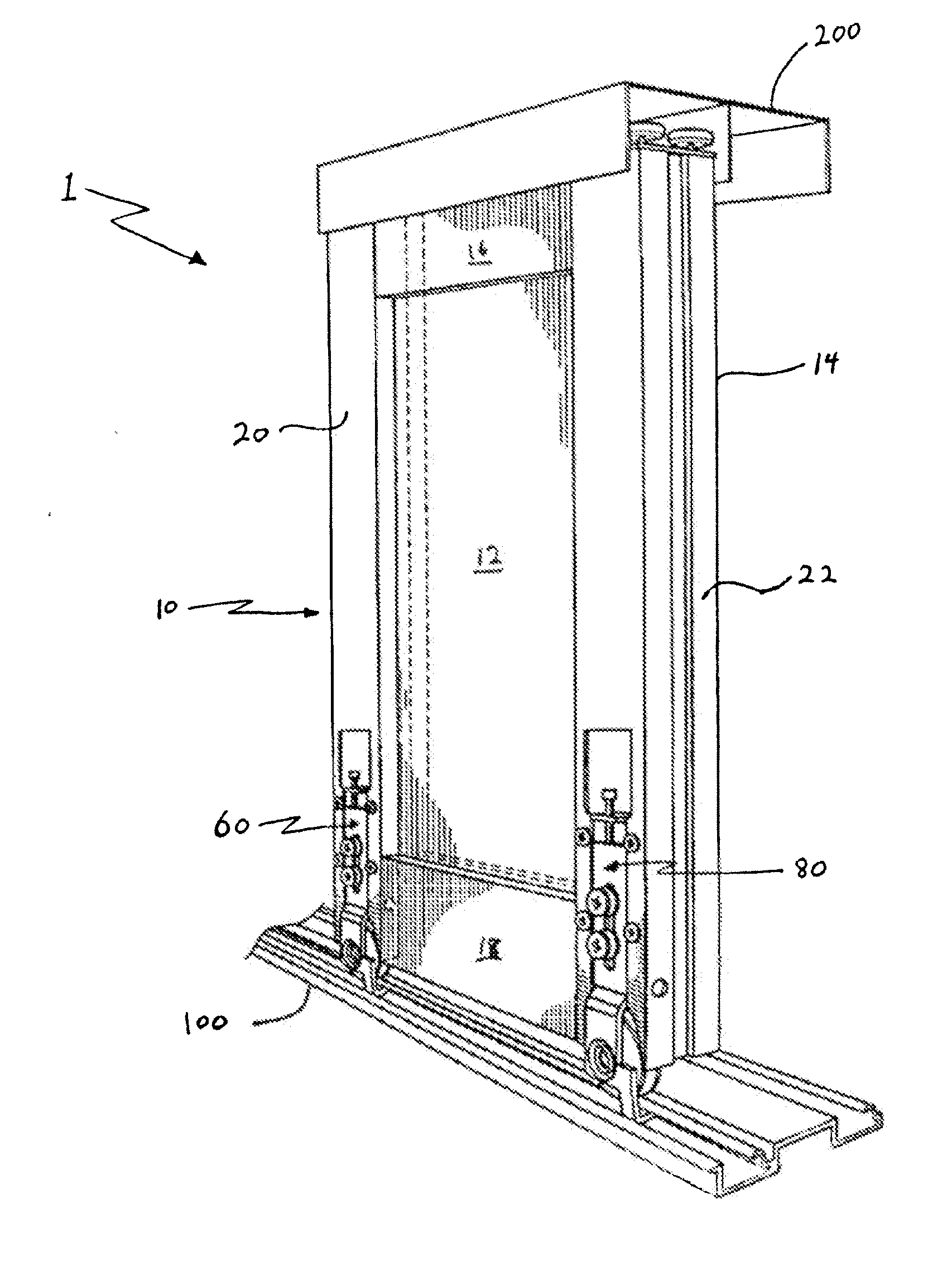Modular sliding door system
a sliding door and module technology, applied in the field of sliding door systems, can solve the problems of affecting the operation of the sliding door, the disengagement of the sliding door (or window, mirror, etc.) from the track, and the upper part of the door
- Summary
- Abstract
- Description
- Claims
- Application Information
AI Technical Summary
Benefits of technology
Problems solved by technology
Method used
Image
Examples
Embodiment Construction
[0030]It is noted that, although, throughout the ensuing discussion, reference is made to a sliding “door”, such reference is made by way of illustration, and not limitation. Thus, the instant invention encompasses sliding structures that may be used as doors (e.g., closet doors); room dividers; (wall) pocket doors, where the sliding “door” extends from, and retracts into, a wall cavity; wall sliders, where lower and upper tracks are placed next to a wall, such that the sliding “door” slides back and forth from behind the wall; etc. In addition, the term “door” is used herein generically and without limitation as to the material of which the door's panel is made. Thus, the panel may be made of clear glass, milky glass, frosted glass, mirror, etc., and combinations thereof.
[0031]FIGS. 1 and 2 show a sliding door assembly 1, including a door 10, a lower track 100, and an upper track 200. The door 10 includes a panel 12 encased within a frame 14 which comprises a horizontal top portion...
PUM
 Login to View More
Login to View More Abstract
Description
Claims
Application Information
 Login to View More
Login to View More - R&D
- Intellectual Property
- Life Sciences
- Materials
- Tech Scout
- Unparalleled Data Quality
- Higher Quality Content
- 60% Fewer Hallucinations
Browse by: Latest US Patents, China's latest patents, Technical Efficacy Thesaurus, Application Domain, Technology Topic, Popular Technical Reports.
© 2025 PatSnap. All rights reserved.Legal|Privacy policy|Modern Slavery Act Transparency Statement|Sitemap|About US| Contact US: help@patsnap.com



